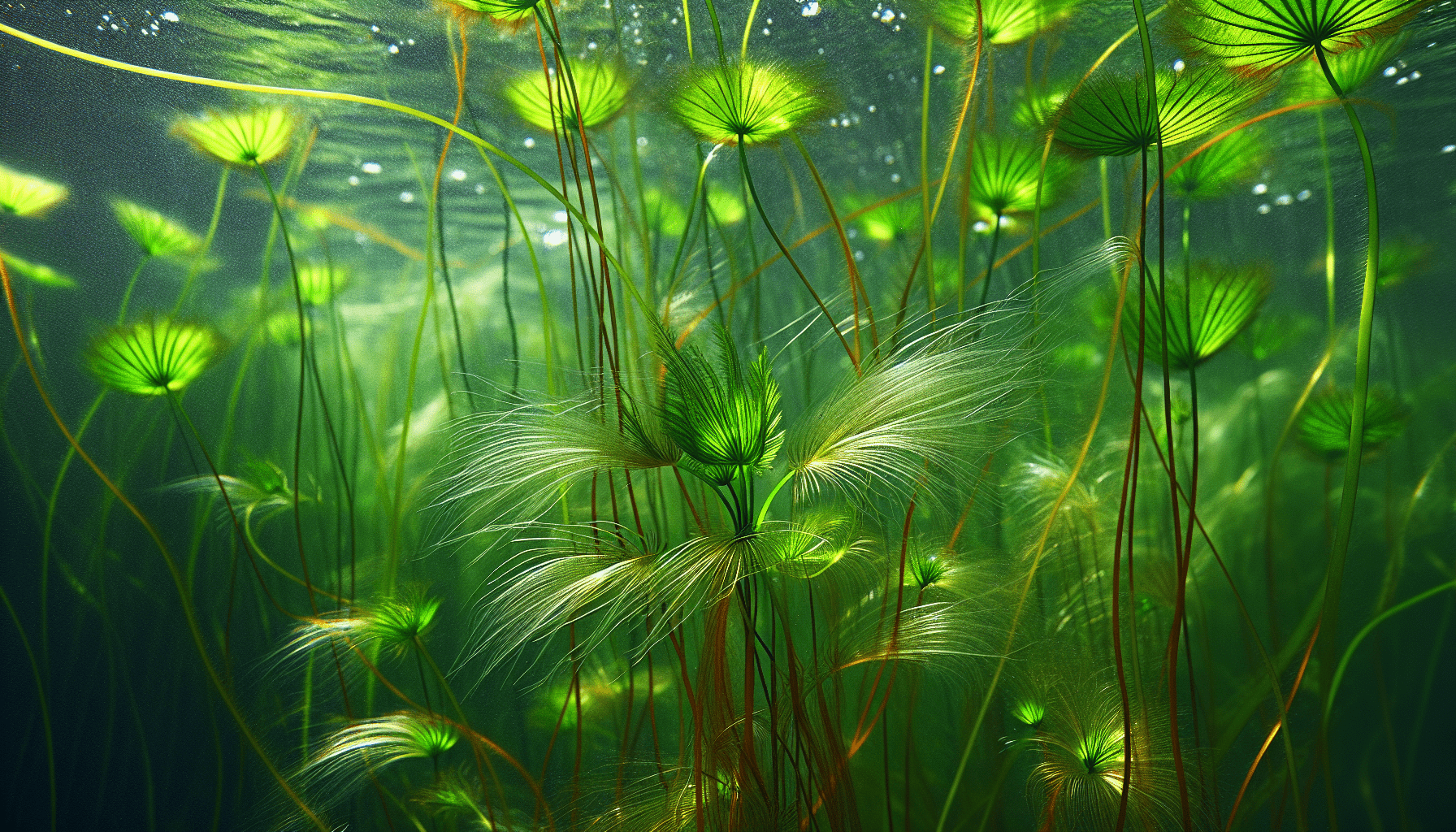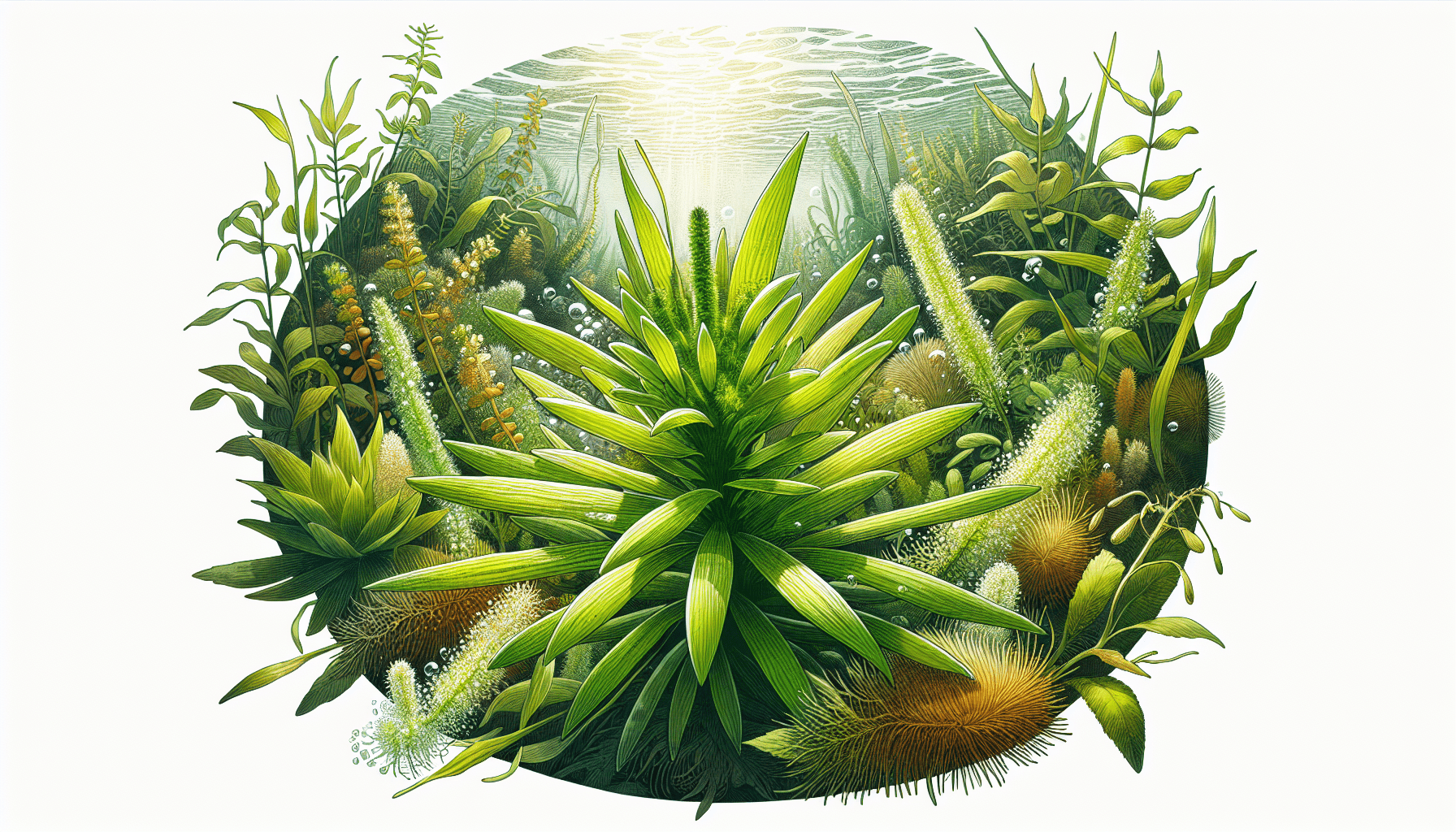In understanding the ecological dynamics of freshwater bodies, one cannot ignore the essential role of aquatic plants, among which the unassuming weed Callitriche takes part. With a name possibly unrecognizable to many, this weed proves its importance within the aquatic ecological system, furnishing habitats for various freshwater species, contributing to water oxygenation, and aiding in nutrient cycling. This article aims to illuminate the role, characteristics, and ecological significance of the aquatic weed Callitriche, providing you with a comprehensive understanding of this aquatic plant.

Understanding Callitriche
Callitriche, commonly referred to as the water-starwort, is a ubiquitous genus of aquatic and semi-aquatic plants. As a component of the family Plantaginaceae, it characterizes a broad diversity of about 50 to 60 species.
The basics of Callitriche
The name Callitriche derives from the Greek words “calli,” meaning beautiful, and “trichos,” meaning hair. This can indeed be an apt adjective as some Callitriche species exhibit beautiful, hair-like structures, especially when they are submerged. These plants are typically slender and consist of opposite, linear leaves, possessing a flat or concave nature with an evident midrib.
Habitat and distribution of Callitriche
Callitriche can be found globally, particularly in the temperate and tropical regions of the world, often in freshwater habitats. Typical settings include ponds, lakes, streams, and ditches. Sometimes, these plants may even occur in ephemeral habitats, like spring puddles. A substantial number of species prefer mildly acidic to neutral pH conditions.
Diversity in Callitriche species
Callitriche species exhibit diversity not just in form but also in their habit—an ability to occupy various habitat types ranging from fully submerged to terrestrial habitats. Some species are entirely terrestrial, a few are amphibious, while others are entirely aquatic. Hence, one could say that Callitriche truly represents a mixed bag of species.
The Biological Characteristics of Callitriche
Callitriche plants are known for their resilience and adaptability, a trait that is well reflected in their biological characteristics.
The life cycle of Callitriche
Callitriche are usually perennial plants and sometimes annuals. They produce seeds that can retain viability for an extended period in water and/or mud, providing these plants a certain level of consistency in their habitats over time. Growth usually starts with the onset of the wet season, and flowering occurs throughout the year whenever optimal conditions are reached.
Adaptations to aquatic life
Callitriche species possess interesting adaptations that support their aquatic life. For submerged growth, elongated, hair-like leaves are produced, which slow down the current and help these plants to float. They combine a mix of photosynthesis strategies, including the use of atmospheric carbon dioxide and the dissolved carbon dioxide in water. This adaptability demands metabolic flexibility, which can be readily found in Callitriche species.
Growth and development of Callitriche
These humble plants can colonize vast expanses of suitable aquatic habitat remarkably swiftly. Their growth rate is heavily reliant on available light, water, and nutrient quantity. Optimum growth is observed in habitats documenting a high percentage of direct sunlight. In some instances, these plants can even tolerate water of high salinity.
Reproduction methods in Callitriche
Callitriche plants, interestingly, exhibit both sexually and asexually reproductive strategies. Certain species of Callitriche are particularly known for their ability to self-fertilize. This favors their survival in a variety of habitats and maintains a consistent presence.
Species of Callitriche
The genera of Callitriche house a range of species whose ecological significance varies considerably across different regions.
Common species of Callitriche in different continents
Well-known species include Callitriche brutia in Europe, Callitriche peploides in North America, and Callitriche stagnalis in Asia. Each of these species is adapted to a range of specific local conditions and plays essential roles in their respective ecosystems.
Endangered species of Callitriche
Several species of Callitriche are listed under the ‘Endangered’ category owing to habitat degradation and pollution. These include Callitriche pedunculata and Callitriche pulchra.
Economic importance of various Callitriche species
Callitriche species may not have direct economic value, but their role in maintaining water ecosystems indirectly aids the economy. They act as oxygenators, helping to keep water bodies clean and healthy, and providing a suitable environment for fisheries and recreational activities.
The Ecosystem Role of Callitriche
Callitriche play an important role in the ecosystem, benefitting several other species and playing a crucial role in nutrient cycling.
Nutrient cycle and Callitriche
In aquatic ecosystems, Callitriche often forms dominant stands, providing an effective substrate for the colonization of various invertebrates, and even acting as a nutrient sink, thereby preventing nutrient leaching which could otherwise result in water pollution.
Callitriche as a habitat for other organisms
These plants also provide critical refuge and feeding locations for various animals, particularly insects and fish, by creating a dense mat of floating foliage.
The role of Callitriche in maintaining water balance
Their role in maintaining ecosystem balance extends to physical aspects of the water body too. By colonizing large areas of water, they reduce the speed of currents and help in the prevention of soil erosion.

The Impact of Callitriche on Human Activities
While Callitriche provide numerous ecosystem services, they can sometimes interfere with human activities, particularly in larger water bodies.
Impediment in waterways
In some areas, dense growth of certain Callitriche species can impede navigation in canals and rivers. They can also cause operational issues in dams and water treatment facilities.
Interference with fishing activities
Callitriche can sometimes interfere with commercial and recreational fishing. Dense mats can impede the movement of boats and become entangled in fishing gear.
Efforts to manage and control Callitriche
Given these potential issues, efforts are being made to manage Callitriche growth. This includes physical removal or the use of herbicides, both of which come with their own environmental implications.
Research on Callitriche
Over the years, our understanding of Callitriche has drastically improved due to dedicated research efforts centered on these fascinating species.
Historical perspective of the scientific study of Callitriche
The study of Callitriche dates back to the early pioneers of botanical science. Its peculiar nature of growth and adaptation has intrigued scientists for centuries.
Notable findings from recent studies on Callitriche
Recent studies on Callitriche have revealed interesting findings like the adaptive capability of certain species in response to climate change, as well as insights into their genomic diversity.
Cultivation and Propagation of Callitriche
Callitriche species are not typically cultivated for ornamental use due to their invasive nature. However, they can be effectively incorporated in wastewater treatment plants for their ability to assimilate nutrients and oxygenate the water.
Methods of propagating Callitriche
Propagation is generally achieved naturally through seed dispersal by water currents or birds. However, manually, this can be achieved through careful harvesting and spreading of seeds, or by fragmenting the plants.
Techniques to maximize growth and performance of Callitriche
Maximizing Callitriche growth involves providing them with optimal light conditions, ensuring an adequate supply of nutrients, and maintaining a favorable temperature.
Conservation Efforts for Callitriche
Despite their robust nature, some Callitriche species are going extinct due to habitat loss and pollution.
Threats to Callitriche and their conservation status
The main threat to Callitriche is the degradation of their aquatic habitats due to pollution. Also, certain invasive Callitriche species are outcompeting native ones, leading to a reduction in biodiversity.
Efforts by governments and organizations to conserve Callitriche
Conservation efforts for Callitriche largely revolve around conserving and rehabilitating aquatic habitats. A few species of Callitriche have been listed in the IUCN Red List, which has necessitated action plans to ensure their survival.
Callitriche and Climate Change
Climate change presents a significant challenge for all life forms, and Callitriche is no exception.
Impact of global warming on Callitriche
Increased temperatures could result in alterations in the distribution and growth patterns of Callitriche species. Additionally, changes in water factors such as pH, nutrient content, and evaporation rates due to global warming could also affect the viability of certain species.
Predictions on the future of Callitriche due to climate change
The future distribution of Callitriche will depend on how effectively they adapt to changing environments. Some research predicts a reduction in distribution, while others suggest they may become more invasive due to climate change.
Invasive Species of Callitriche
While invasive species of Callitriche are a challenge for native aquatic systems, they provide an interesting field of study.
Common invasive species of Callitriche
Some Callitriche species show an invasive propensity in regions where they are introduced. In North America, for example, Callitriche brutia, native to Europe, is considered an invasive species.
Impact and management of invasive Callitriche species
Invasive Callitriche species can alter aquatic habitats and impact native species. Their management often involves physical removal, proactive monitoring, and public education about the detrimental impacts of releasing non-native flora into the environment.